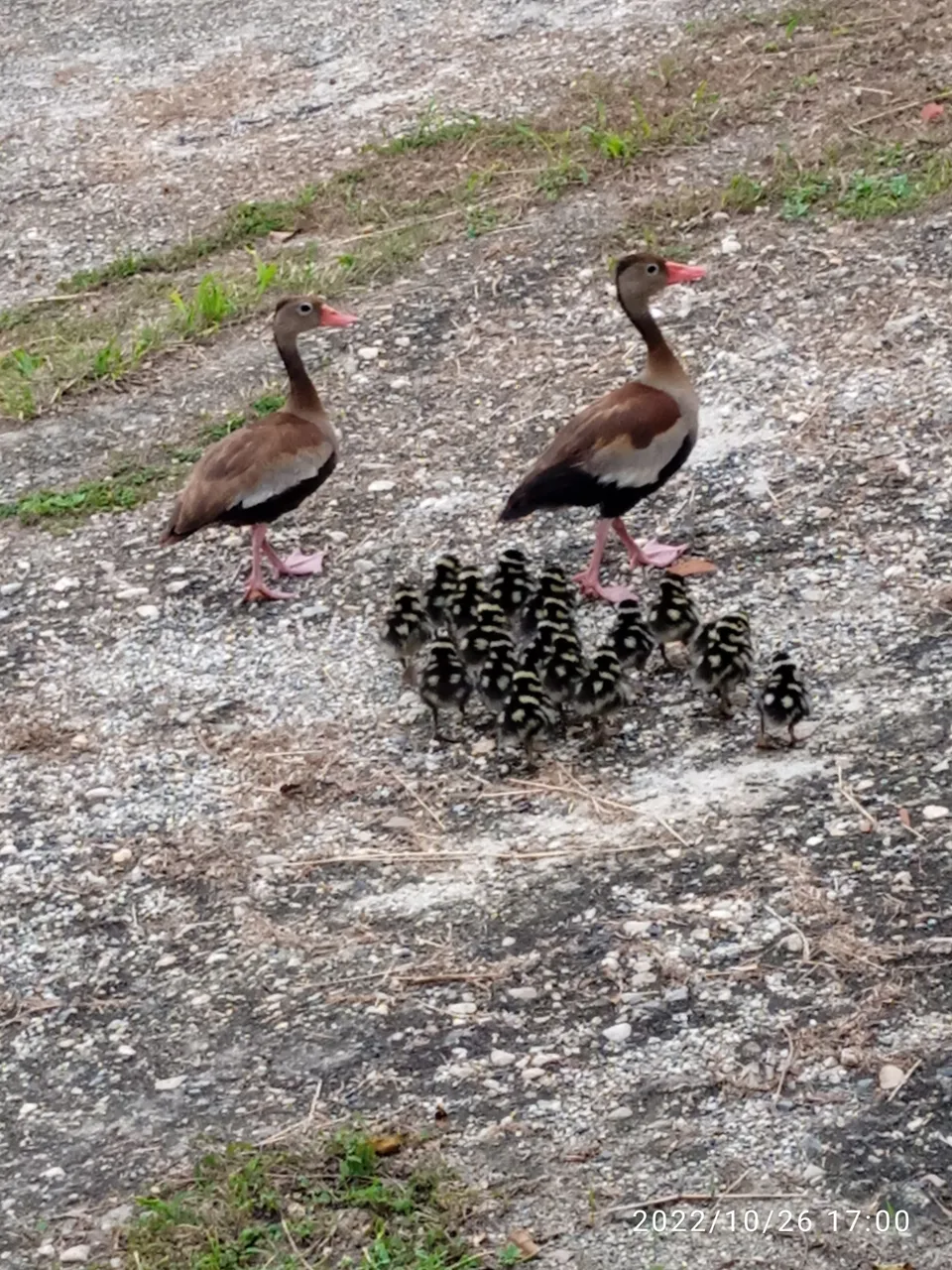
Hello beautiful community of Hive and Feathered Friends.
My husband @darioreuben came walking a few blocks from the house a few days ago and found a pleasant but worrying scene: a duck was walking with around 16 offspring down the street. He had to herd them onto the property next door to safety.
Hola bella comunidad de Hive y Feathered Friends.
Mi esposo @darioreuben venía hace días caminando a pocas cuadras de la casa y se encontró con una grata pero preocupante escena: una pata caminaba con alrededor de 16 crías por la calle. Tuvo que arrearlos para que entraran a la propiedad de al lado y se pusieran a salvo.
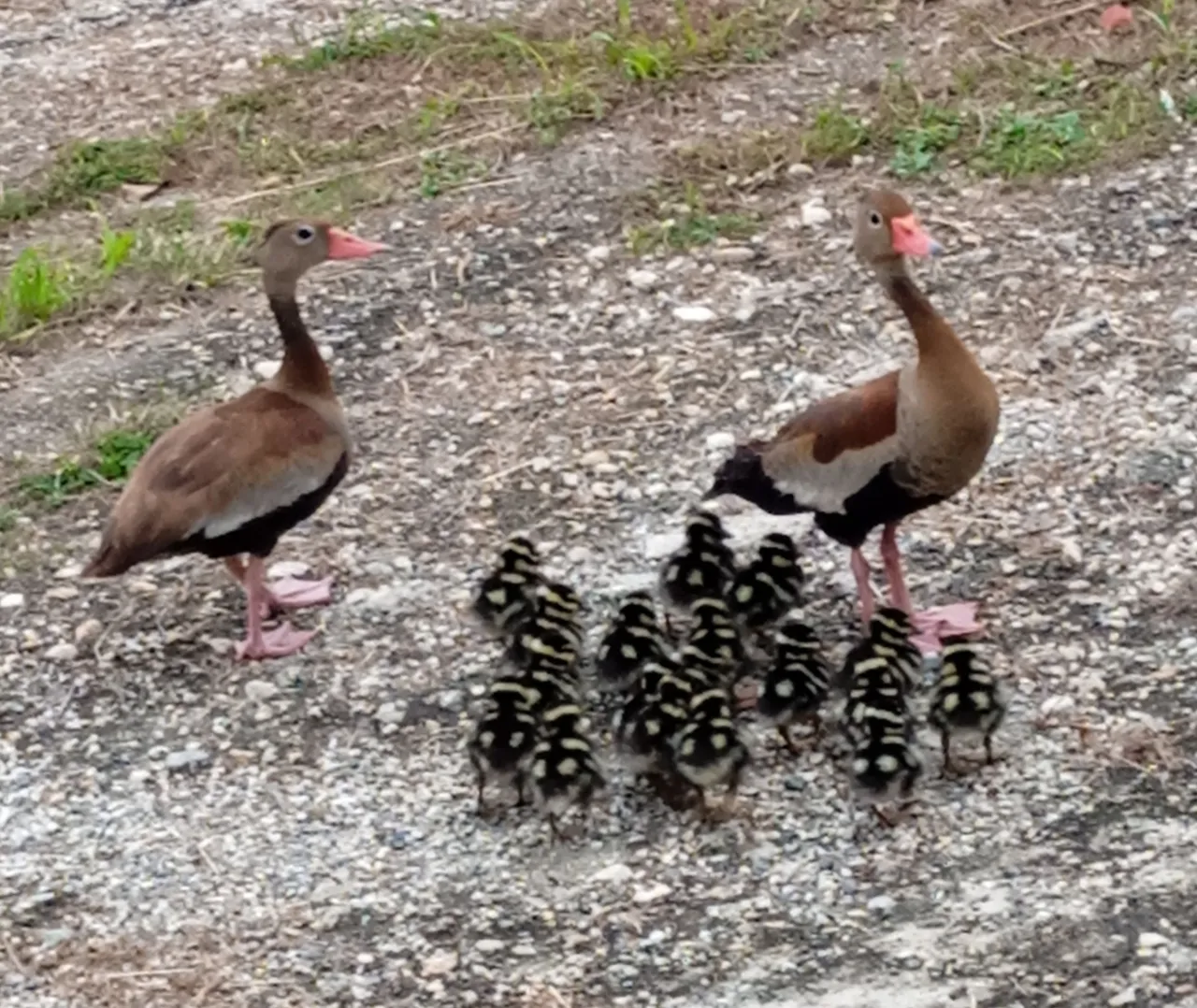
We photographed them and, shortly after, another adult came flying and whistling, probably the father. I recognized that sound because he had heard it many times at night and I thought they were migratory birds.
Los fotografiamos y, poco después, llegó otro adulto volando y silbando, probablemente se trataba del padre. Reconocí ese sonido pues lo había escuchado muchas veces en la noche y creí que eran aves migratorias.
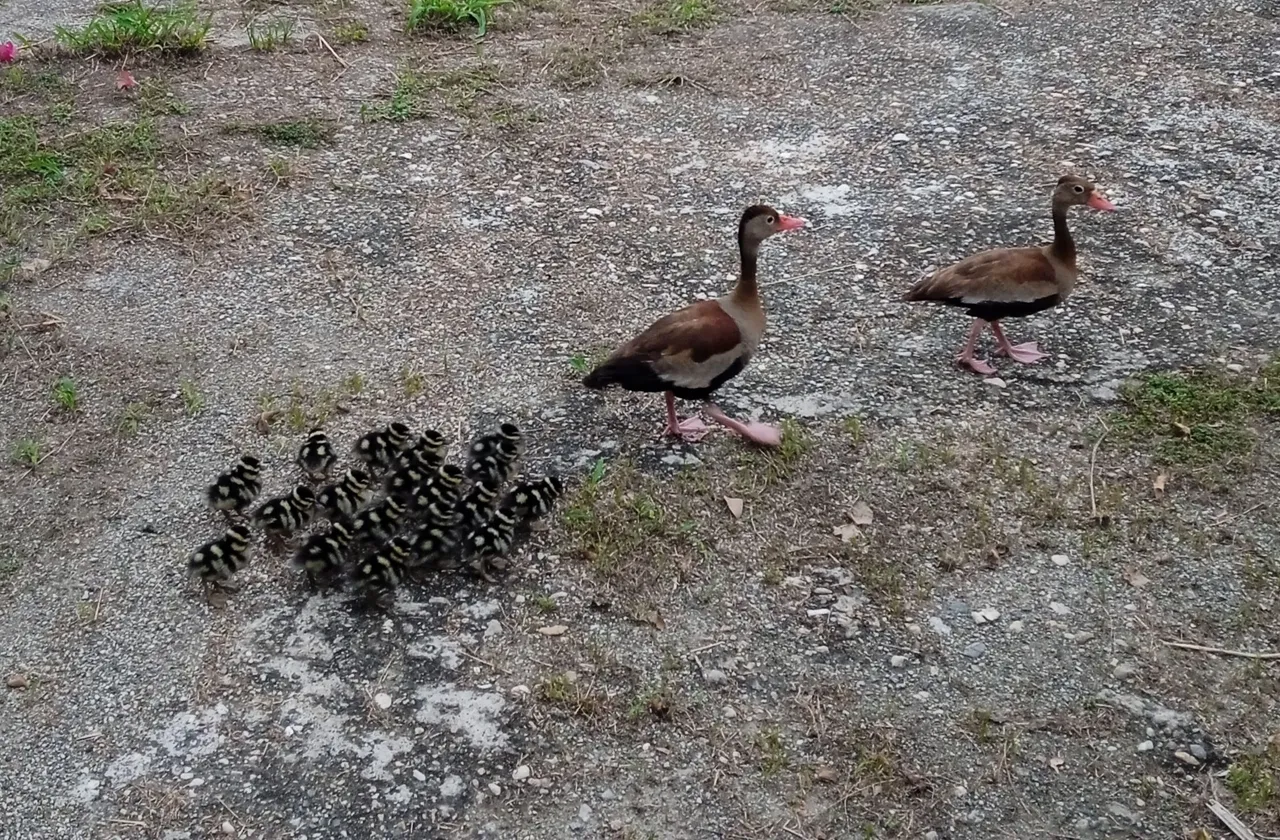
They were wandering around and trying to get outside again, then it started to rain and we had to go inside and leave them alone.
Estuvieron dando vueltas e intentando salir a la calle de nuevo, después empezó a llover y tuvimos que entrar y dejarlos solos.
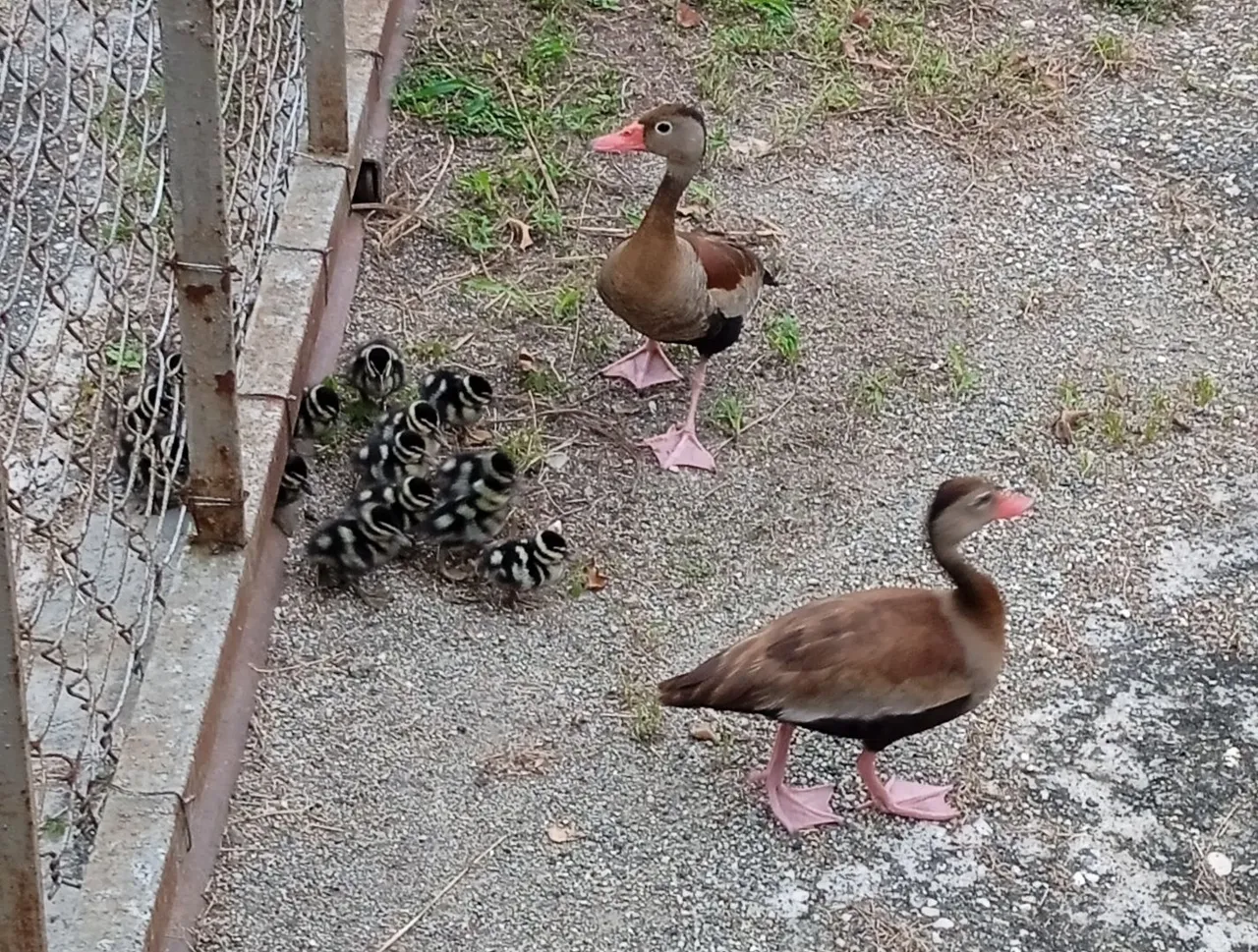
There was another forecast of a storm, which perhaps explains the eagerness to move the nest on the part of both parents.
We entered the house hoping to see them again when it stopped raining, but the rain did not stop, it got dark and the electricity went out.
Había otro pronóstico de tormenta, lo que quizás explique el afan de mudar el nido por parte de ambos padres.
Entramos a la casa con la esperanza de volver a verlos cuando dejara de llover, pero la lluvia no cesó, anocheció y se fue la luz.

This is Dendrocygna autumnalis, also called "Pisingo" and "Black-bellied Whistling Duck", a species of American duck that lives and breeds from the southern United States to South America, making seasonal flights that are not exactly considered migratory.
It is also known as "Tree Duck", because it has arboreal habits.
Se trata de Dendrocygna autumnalis, también llamado "Pisingo" y "Pato silbador de vientre negro", una especie de pato americano que vive y cría desde el sur de Estados Unidos hasta Sudamérica , haciendo vuelos estacionales que no se consideran exactamente migratorios.
También es conocido como "Pato de árbol", porque tiene hábitos arbóreos.
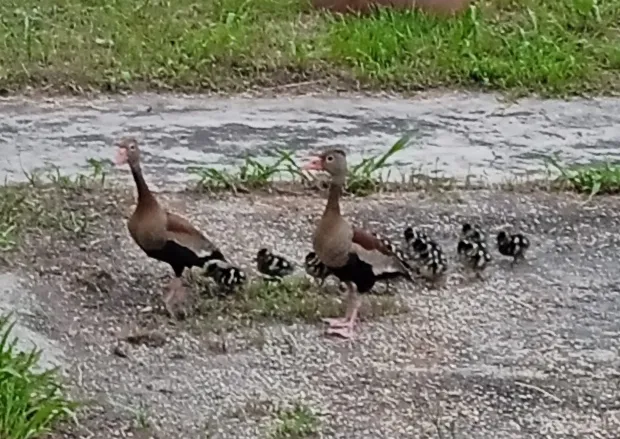
They live in freshwater lagoons and swamps surrounded by trees, lack sexual dimorphism and are gregarious, living in small groups. They make their nests in hollow trees or on the ground. They eat grasses and seeds (sometimes causing damage to some crops) as well as small insects and molluscs. Some fly south in winter and others are sedentary.
Viven en lagunas y pantanos de agua dulce rodeados de árboles, carecen de dimorfismo sexual y son gregarios, viviendo en grupos pequeños. Hacen sus nidos en huecos de árboles o en el suelo. Comen gramíneas y semillas, (ocasionando a veces daños en algunos cultivos) así como pequeños insectos y moluscos. Algunas vuelan hacia el sur en invierno y otras son sedentarias.
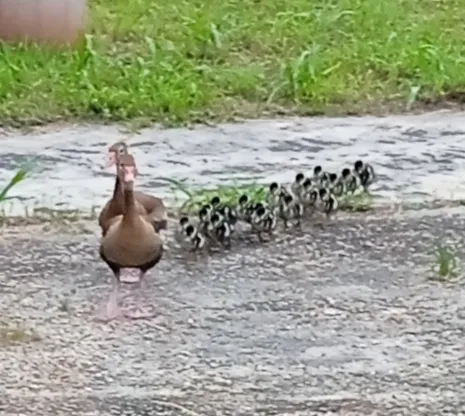
There are two subspecies: D.A. autumnalis and D.A. discolor.
The name Dendrocygna comes from the Greek word "dendro" which means tree, and cygnus, which is the name of the genus to which the swans belong, which in turn belong to the same family as D. autumnalis: the Anatinae. The word autumnalis means autumnal, which alludes to the fact that autumn is the season in which they are most observed.
Existen dos subespecies: D. A. autumnalis y D.A. discolor.
El nombre Dendrocygna viene de la palabra griega "dendro" que significa árbol y cygnus, que es el nombre del género al que pertenecen los cisnes, los cuales se ubican a su vez a la misma familia que D. autumnalis: la Anatinae. La palabra autumnalis significa otoñal, lo que hace alusión al hecho de que otoño es la estación en la que se observan más.
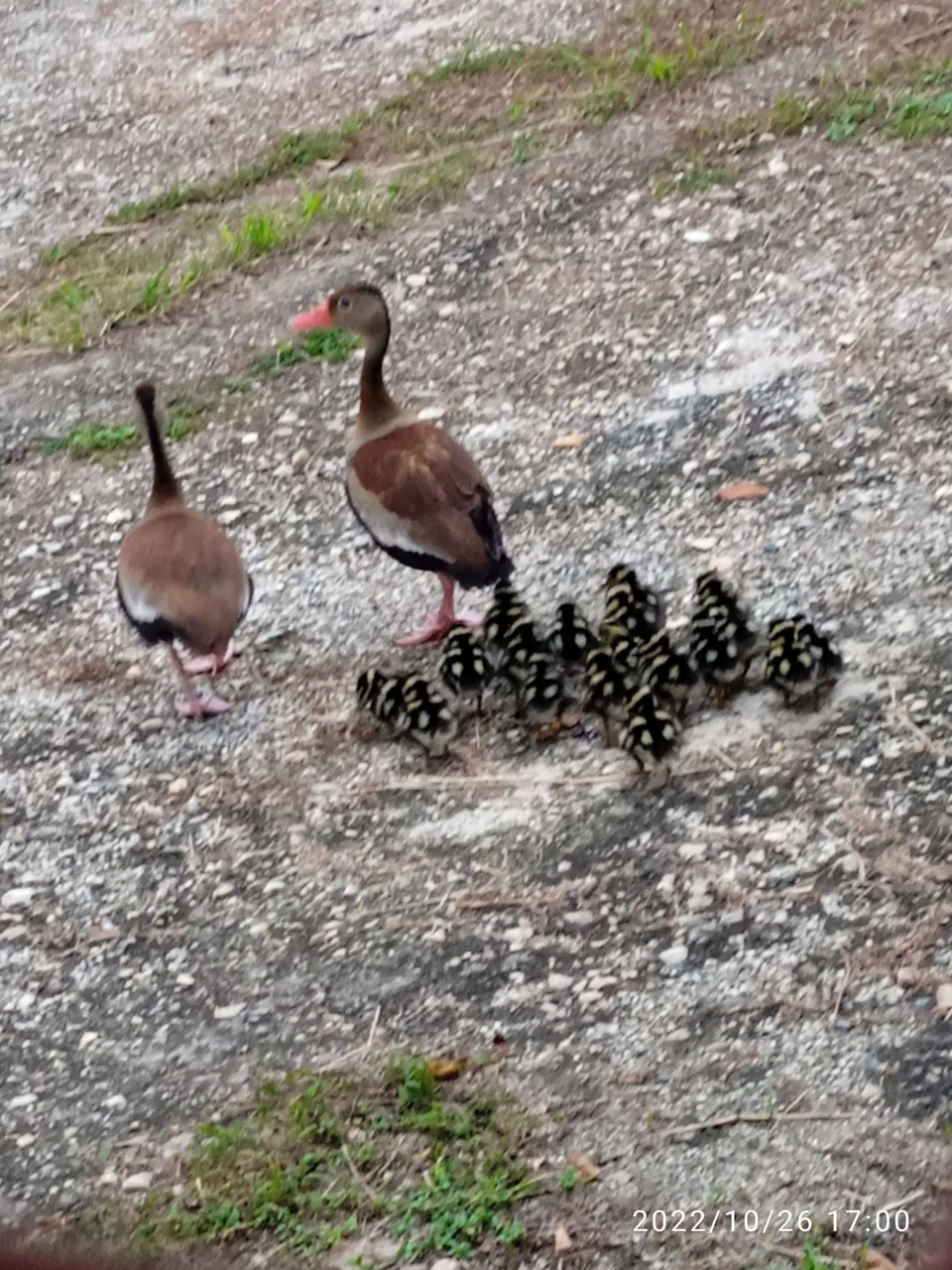
The next day a neighbor told us that he had seen them fall from a nest made on top of the hollow trunk of a chaguaramo. He also said that he took several of the hatchlings, trying to save them but they later died. That indicates that there were more than the 16 that appear in the photos.
Al día siguiente un vecino nos contó que los había visto caer desde un nido hecho en lo alto del tronco hueco de un chaguaramo. También dijo que tomó a varias de las crías, tratando de salvarlas pero después murieron. Eso indica que eran más de los 16 que aparecen en las fotos.
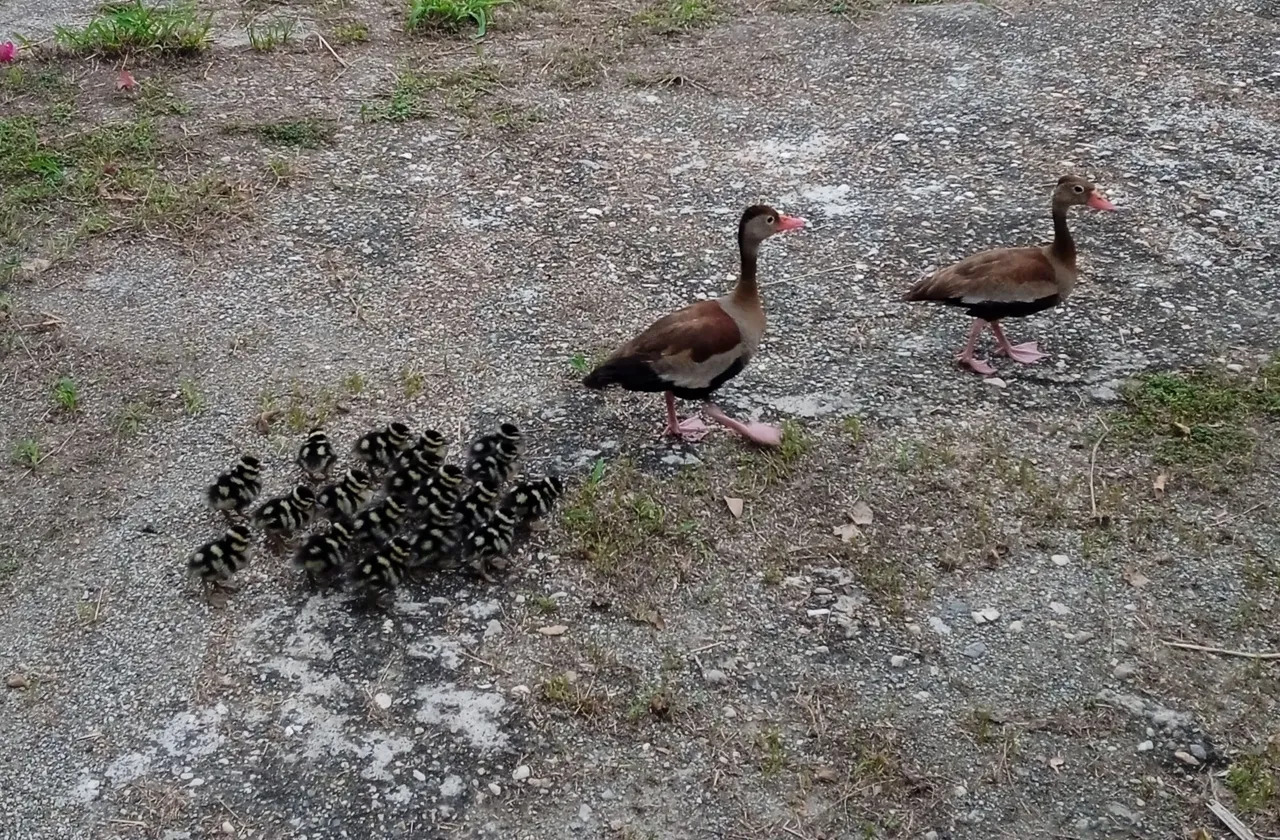
All photos were taken by myself, @elentogether, with my Xiaomi Redmi 9C smartphone.
For information gathering I used articles from Wikipedia and WikiAves Icesi.
Todas las fotos fueron tomadas por mi misma, @elentogether, con mi teléfono inteligente Redmi 9C de Xiaomi.
Para reunión de información utilicé artículos de Wikipedia y WikiAves Icesi.
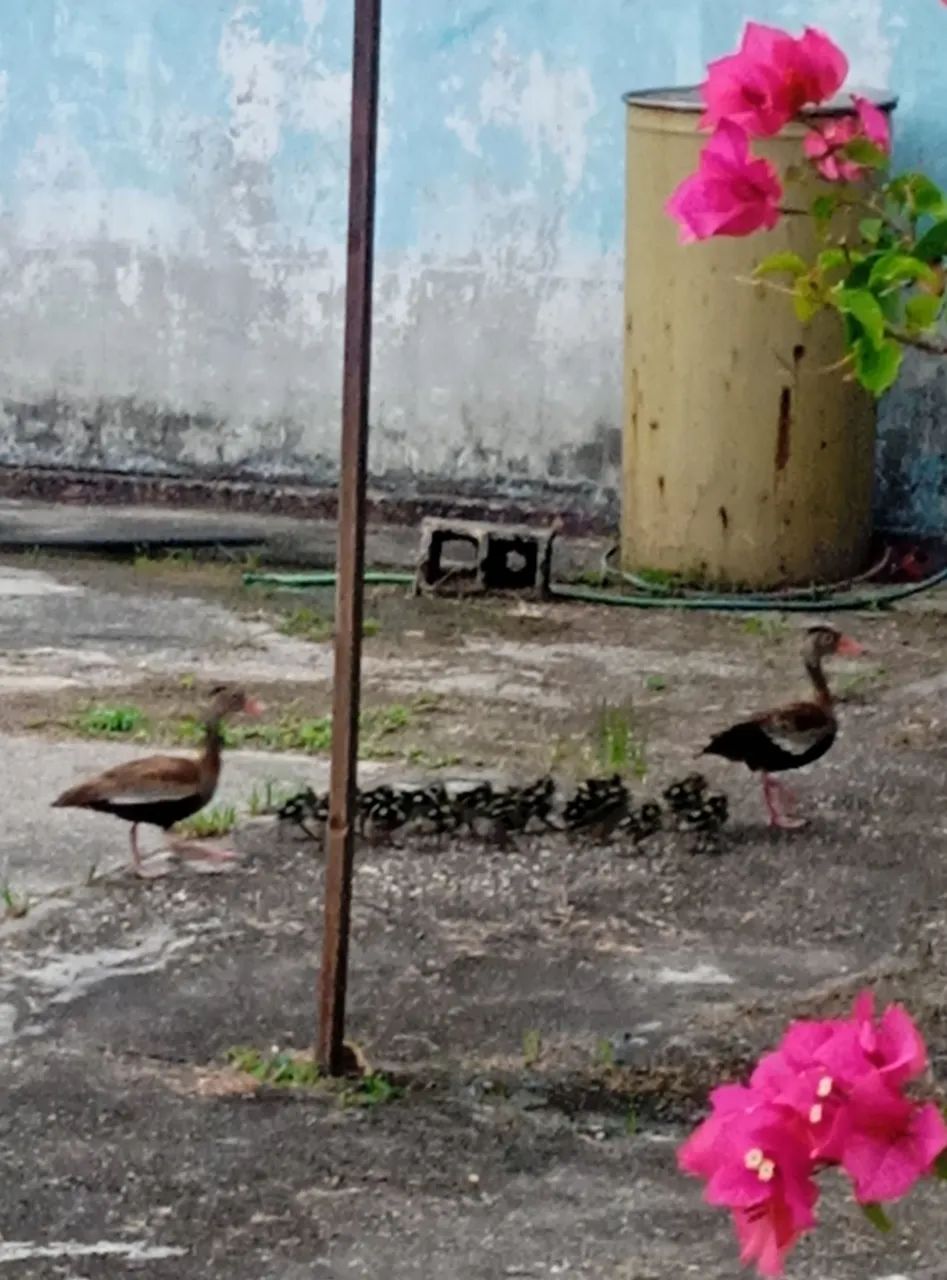
As the weekly themed challenge of the feathered friends community, created by @nelinoeva, invites submissions of photos of two birds, I wanted to make my entry with this post, but my photos also show a lot of small hatchlings, so I couldn't participate.
In any case, it is a pleasure to show this pleasant encounter that allowed me to take photos of birds more closely, something that is normally very difficult for me.
Como el reto semanal temático de la comunidad de feathered friends, creado por @nelinoeva, invita a presentar fotos de dos aves, quise hacer mi entrada con esta publicación, pero en mis fotos también se ven muchas crías pequeñas, así que no pude participar.
De todas maneras es un gusto mostrar este grato encuentro que me permitió tomar fotos de aves más de cerca, algo que para mi normalmente es muy difícil.
Thank you so much for stopping by and reading my blog.
Muchas gracias por detenerse y leer mi blog.

Gif made with / Gif hecho con Canva
Translated with / Traducido con: Google translator.
References / Referencias:
https://en.wikipedia.org/wiki/Black-bellied_whistling_duck
https://wikiaves.icesi.edu.co/?page=Iguaza+Com%C3%BAn+-+Dendrocygna+autumnalis










